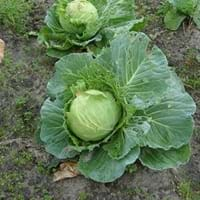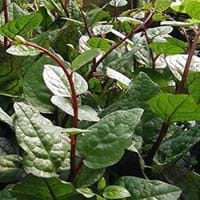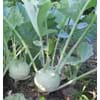Life Span
Annual
Perennial
Origin
Europe, Mediterranean, Canary Islands, Northern Africa
Southeastern Asia, India
Types
Not Available
Basella rubra, L.Basella oleracea, Landw.Basella lucida, L.Basella japonica, Burm.f.Basella cordifolia,
Number of Varieties
Not Available
Habitat
Not Available
gardens
USDA Hardiness Zone
Not Available
Not Available
Sunset Zone
A1, A2, A3, H1, H2, 1a, 1b, 2a, 2b, 3a, 3b, 4, 5, 6, 7, 8, 9, 10, 11, 12, 13, 14, 15, 16, 17, 18, 19, 20, 21, 22, 23, 24
H1, H2, 3a, 3b, 4, 5, 6, 7, 8, 9, 10, 11, 12, 13, 14, 15, 16, 17, 18, 19, 20, 21, 22, 23, 24
Habit
Rosette/Stemless
Vining/Climbing
Minimum Width
Not Available
Flower Color
Yellow
White, Pink, Light Pink
Flower Color Modifier
Bicolor
Bicolor
Fruit Color
Brown
Purple, Black
Leaf Color in Spring
Not Available
Green, Light Green
Leaf Color in Summer
Green, Gray Green, Dark Green
Green, Dark Green
Leaf Color in Fall
Green, Gray Green
Green, Dark Green
Leaf Color in Winter
Green, Gray Green
Green, Dark Green
Leaf Shape
Spinach Type
Round
Plant Season
Spring, Fall, Winter
Spring, Summer, Fall, Winter
Sunlight
Full Sun, Partial Sun
Full Sun, Partial Sun
Type of Soil
Loam, Sand
Clay, Loam
The pH of Soil
Neutral, Alkaline
Neutral
Soil Drainage
Well drained
Well drained
Bloom Time
Spring, Late Spring, Early Summer
Indeterminate
Tolerances
Drought
Drought
Where to Plant?
Container, Ground, Pot
Ground, Pot
How to Plant?
Seedlings
Seedlings
Plant Maintenance
Medium
Medium
Watering Requirements
Do Not over Water
Keep ground moist, Requires watering in the growing season, Water Deeply, Water less during winter
In Summer
Lots of watering
Lots of watering
In Spring
Moderate
Moderate
In Winter
Average Water
Average Water
Soil pH
Neutral, Alkaline
Neutral
Soil Type
Loam, Sand
Clay, Loam
Soil Drainage Capacity
Well drained
Well drained
Sun Exposure
Full Sun, Partial Sun
Full Sun, Partial Sun
Pruning
No need to prune, Remove damaged leaves, Remove dead branches, Remove dead leaves
Remove dead leaves, Remove dead or diseased plant parts, Requires very little pruning
Fertilizers
Nitrate based fertilizers
All-Purpose Liquid Fertilizer
Pests and Diseases
Alternaria Leaf Spot, Anthracnose, Aphids, Beet armyworm, Black rot, Cabbage looper, Cercospora leaf spot, Clubroot, Cutworms, Damping-off, Diamondback moth, Downy mildew, Flea Beetles, Leaf spot, Red blotch, Root knot nematode, Thripes
Insects, Mites
Plant Tolerance
Drought
Drought
Flower Petal Number
Single
Single
Edible Fruit
No
Not Available
Foliage Texture
Bold
Medium
Foliage Sheen
Matte
Glossy
Attracts
Bugs
Not Available
Allergy
Not Available
no allergic reactions
Aesthetic Uses
Not Used For Aesthetic Purpose
Not Used For Aesthetic Purpose
Beauty Benefits
Not Available
Not Available
Environmental Uses
soil erosion prevension on hill slopes
Air purification
Medicinal Uses
anti-cancer, Heart problems
Astringent
Part of Plant Used
Leaves
Fruits, Leaves
Other Uses
Used as a vegetable
Culinary use, Used As Food
Used As Indoor Plant
No
No
Used As Outdoor Plant
Yes
Yes
Garden Design
Container, Edible, Herb / Vegetable
Container, Edible, Groundcover, Herb / Vegetable, Tropical, Vine
Botanical Name
BRASSICA oleracea
BASELLA alba
Common Name
Carolina Cabbage Collard Greens, Collard Greens
Ceylon Spinach, Indian Spinach, Malabar Spinach
In Hindi
collard साग
भारतीय पालक
In German
Blattkohl
Indian Spinat
In French
Chou cavalier
épinards indienne
In Spanish
Brassica oleracea viridis
espinaca india
In Greek
λάχανο
Ινδικό Σπανάκι
In Portuguese
greens kollard
espinafre indiano
In Polish
kollard zieleni
Indyjski szpinak
In Latin
vireta kollard
Spinach Indian
Phylum
Magnoliophyta
Not Available
Class
Magnoliopsida
Not Available
Order
Brassicales
Caryophyllales
Family
Brassicaceae
Basellaceae
Clade
Not Available
Angiosperms, Core eudicots, Eudicots
Tribe
Brassiceae
Not Available
Subfamily
Not Available
Not Available
Season and Care of Collard Greens and Indian Spinach
Season and care of Collard Greens and Indian Spinach is important to know. While considering everything about Collard Greens and Indian Spinach Care, growing season is an essential factor. Collard Greens season is Spring, Fall and Winter and Indian Spinach season is Spring, Fall and Winter. The type of soil for Collard Greens is Loam, Sand and for Indian Spinach is Clay, Loam while the PH of soil for Collard Greens is Neutral, Alkaline and for Indian Spinach is Neutral.
Collard Greens and Indian Spinach Physical Information
Collard Greens and Indian Spinach physical information is very important for comparison. Collard Greens height is 30.50 cm and width 30.00 cm whereas Indian Spinach height is 2.40 cm and width Not Available. The color specification of Collard Greens and Indian Spinach are as follows:
Collard Greens flower color: Yellow
Collard Greens leaf color: Not Available
Indian Spinach flower color: White, Pink and Light Pink
- Indian Spinach leaf color: Green, Light Green
Care of Collard Greens and Indian Spinach
Care of Collard Greens and Indian Spinach include pruning, fertilizers, watering etc. Collard Greens pruning is done No need to prune, Remove damaged leaves, Remove dead branches and Remove dead leaves and Indian Spinach pruning is done Remove dead leaves, Remove dead or diseased plant parts and Requires very little pruning. In summer Collard Greens needs Lots of watering and in winter, it needs Average Water. Whereas, in summer Indian Spinach needs Lots of watering and in winter, it needs Average Water.





